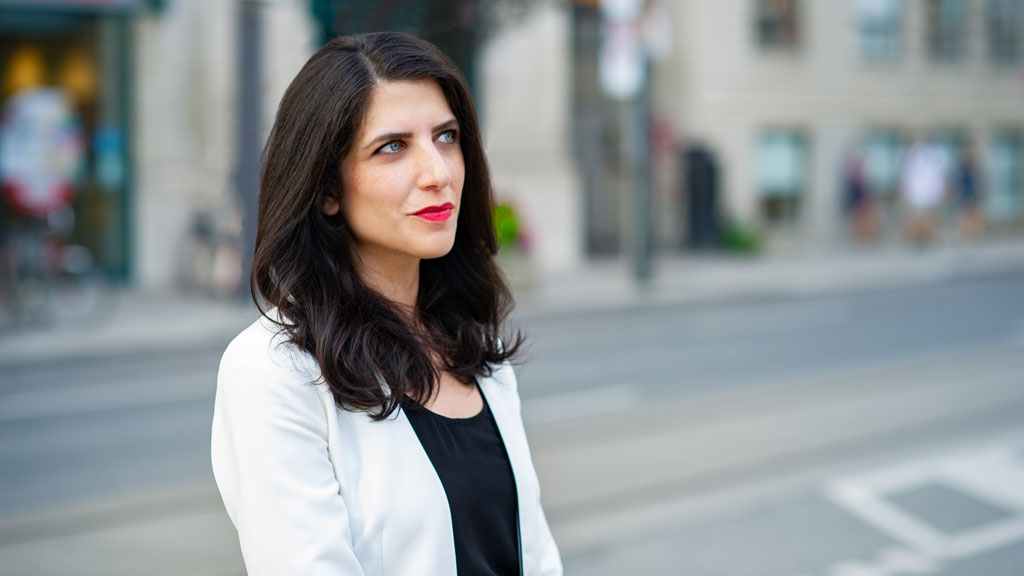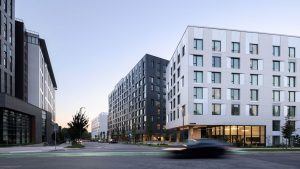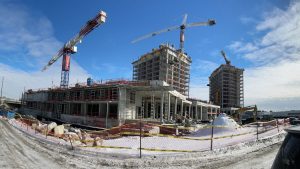In much the same way that Canadian women who work in construction have been busy forming groups to advance their interests, female architects are coming together to tackle issues of importance to them, such as equity, diversity and inclusiveness in their profession.
Building Equity in Architecture Toronto (BEAT) was formed in 2015.
“BEAT is an equity group that was formed because of a need for more networking opportunities for women architects and others in the building and design profession, specifically regarding retaining women in the field,” said Sonia Ramundi, BEAT executive director and an architect with Williamson Williamson Inc.
“Although men and women are in roughly equal numbers in university, many women leave architecture later on in their careers,” said Ramundi.
BEAT’s mandate is to advance the achievements and visibility of women, minorities and other under-represented groups in architecture.
It runs events that are open to everyone, regardless of gender or background.
The organization hosts BEAT Talks, which are discussions held at the offices of architects across the city, in which the hosts discuss their professional experiences.
For example, in late June there was a BEAT Virtual Talk with architect Annabel Vaughan.
And a mid-July event on diversity and inclusion is being planned.
In 2018, BEAT asked Liz Wreford, principal landscape architect at Public City Architecture Inc. in Winnipeg, to start a regional chapter.
“Liz reached out to women in the profession in Winnipeg to form a local chapter under the BEA Prairies banner,” said Melissa McAlister, principal, Prairie Architects Inc.
“On the Prairies we understand that our community is small, and from the start we wanted to ensure it included all city building professions,” said McAlister.
“有一个现有的women-in-architecture组in Calgary and they formed BEA Calgary. We don’t have official members in Saskatchewan or other parts of Alberta yet, but we have reached out to some potential members there.”
(There are also BEA Atlantic and BEA West chapters.)
The mission of BEA Prairies is to “support, celebrate and connect practitioners in architecture, landscape architecture, urban planning, the construction industry and interior design across the prairies.”
The organization uses what it calls an intersectional and cross-disciplinary approach to support leadership, mentorship and networking opportunities in architecture.
Although BEA Prairies doesn’t have a formal membership structure, an executive membership of 12-15 and a group of volunteers form its core planning group.
BEA Prairies hosts events and public lectures.
For example, in February 2020, Lindsay Oster, principal architect at Prairie Architects Inc., gave a talk entitled “Building Equity in Architecture: Mitigation, Adaptation and Resilience.”
“I discussed the interconnection of the climate crisis and social inequity and the role that architecture and the built urban environment has to play in this,” said Oster. “Using a project we are currently engaged in, my presentation described what meaningful consultation with a diverse range of stakeholders looks like.”
The project Oster discussed is the North End Women’s Centre in Winnipeg.
The centre currently operates out of a number of buildings on Selkirk Avenue that no longer meet the community’s needs.
“Prairie Architects was hired to design a new sustainable mixed-use home for the centre,” said Oster. “In order to understand the stakeholder vision, we facilitated a number of different sessions ranging from one-on-one living room coffee chats to larger facilitated sessions which brought together community, staff, administration and board.”
In early March 2020, before the COVID-19 lock-down came into effect, BEA Prairies sponsored a symposium called City Building for All: Working towards social equity in design and urbanism.
The event, which took place at the John A. Russell Building, which houses the University of Manitoba School of Architecture, attracted a sell-out audience of 90 participants.
Jennifer Fix, an urban planner at Dialog Design in Vancouver, spoke on bringing inclusivity into the design process.
“More diverse voices have to be taken into account,” said Fix “Designers and planners must listen to and consider the lived experience of equity-seeking and under-represented groups. Their voices need to be around the table. Things are changing, but only slowly.”
Zoë Mager, a planner with HTFC Planning and Design in Winnipeg, moderated a panel discussion called Social Innovation in Action for Building Up Our Communities.
“有许多小规模社会和设计创新vations in Winnipeg that can be replicated or scaled-up elsewhere,” said Mager.
Examples cited during the discussion included the woonerf (“vone-airf”) shared space near the Manitoba Theatre Centre; the Meet Me at the Bell Tower Friday evening get-together in the North End; and The Winnipeg Boldness Project’s baby basket.
“Projects such as these help to build social, environmental and economic resilience,” said Mager.









Recent Comments
comments for this post are closed